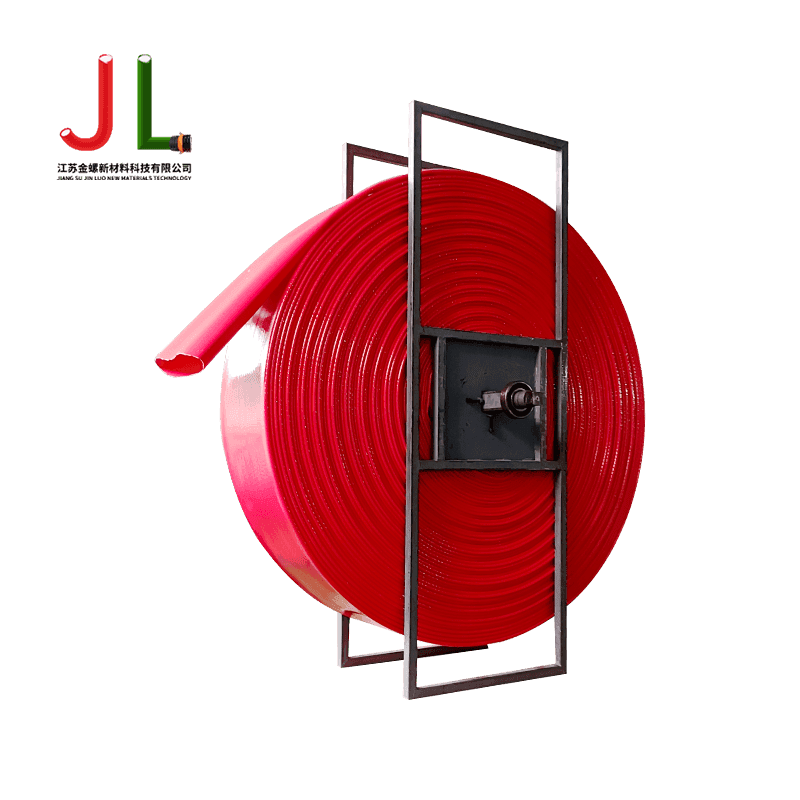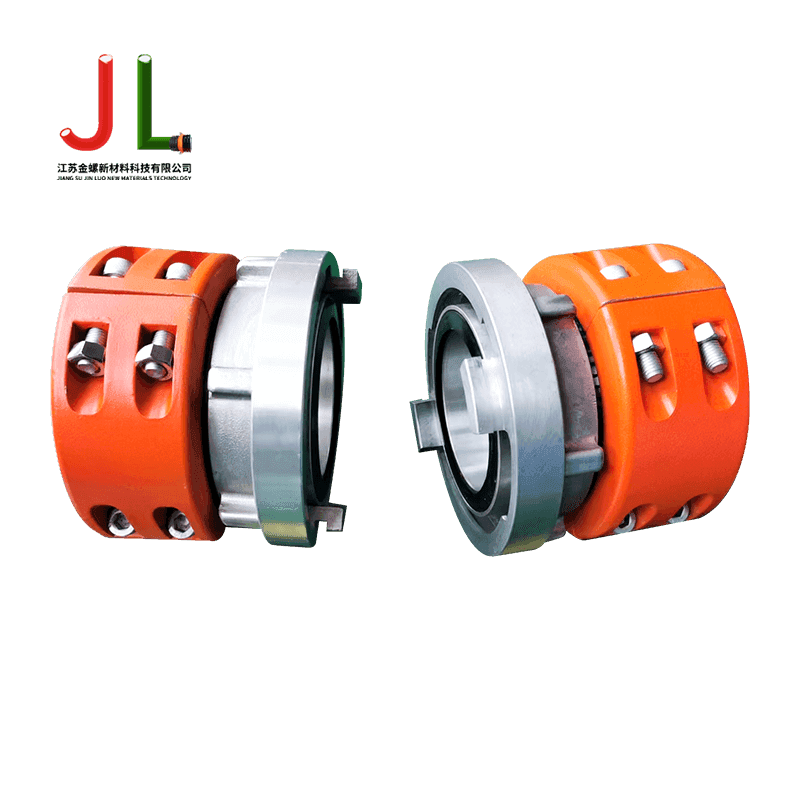Understanding Discharge Hoses: Types, Applications, and Selection Guide
What is a Discharge Hose and Its Primary Uses
A discharge hose is a flexible conduit designed to transport liquids or gases from one location to another under pressure. These hoses are essential components in numerous industries, including oil and gas, agriculture, firefighting, and industrial applications. Discharge hose applications vary widely depending on the specific requirements of each sector.
Jiangsu Jinluo New Material Technology Co., Ltd specializes in manufacturing high-quality discharge hoses for various demanding applications. Their product range includes polyurethane layflat fracturing hoses, oil and gas hoses, fire truck remote water supply hoses, and many other specialized types. These hoses are engineered to withstand challenging conditions while maintaining optimal performance.
The key characteristics of a quality discharge hose include:
- High-pressure resistance to handle fluid transfer requirements
- Durability against abrasion, chemicals, and environmental factors
- Flexibility for easy handling and installation
- Temperature resistance for various operating conditions
- Customizable lengths and diameters to suit specific applications
Different Types of Discharge Hoses and Their Specifications
Industrial Discharge Hoses
Industrial applications require robust hoses that can handle various chemicals, oils, and other fluids. These hoses typically feature reinforced construction with multiple layers of material to ensure longevity under demanding conditions.
Agricultural Discharge Hoses
Designed for irrigation and fertilization purposes, agricultural hoses must be lightweight yet durable. They often incorporate UV-resistant materials to withstand prolonged sun exposure.
Firefighting Discharge Hoses
Fire truck remote water supply hoses represent a critical category where high pressure and reliability are paramount. These hoses must meet strict safety standards while delivering consistent performance in emergency situations.
Oil and Gas Discharge Hoses
The oil and gas industry requires specialized hoses that can handle hydrocarbons and operate under extreme pressures. Oil and gas discharge hoses often incorporate multiple layers of reinforcement and chemical-resistant materials.
Key Factors to Consider When Choosing a Discharge Hose
Material Composition
The material of a discharge hose determines its compatibility with various fluids and environmental conditions. Common materials include:
- Polyurethane for abrasion resistance
- Rubber for flexibility and durability
- PVC for lightweight applications
- Composite materials for specialized requirements
Pressure Ratings
Understanding the working pressure and burst pressure requirements is crucial for selecting the appropriate hose. Pressure ratings should always exceed the maximum expected operating pressure.
Diameter and Length Requirements
The size of the hose directly affects flow rates and pressure drops. Large diameter discharge hoses are essential for high-volume applications, while smaller diameters may suffice for precise fluid transfer needs.
Temperature Range
Hoses must be selected based on the temperature of both the conveyed medium and the operating environment. Extreme temperatures can affect hose performance and lifespan.
Proper Maintenance and Care for Discharge Hoses
Regular Inspection Procedures
Implementing a routine inspection schedule can prevent unexpected failures. Key inspection points include:
- Checking for cracks, abrasions, or visible damage
- Inspecting fittings and connections for leaks
- Verifying the integrity of reinforcement layers
- Assessing flexibility and kink resistance
Cleaning and Storage Best Practices
Proper cleaning after use extends hose life significantly. For layflat discharge hoses, special care must be taken to ensure complete drainage and drying before storage to prevent microbial growth.
Repair vs. Replacement Considerations
While minor damage can sometimes be repaired, significant wear or pressure-bearing damage typically requires hose replacement to maintain safety standards.
Specialized Applications of Discharge Hoses
Trenchless Pipeline Rehabilitation
In trenchless technology, specialized hoses are used for pipe lining and rehabilitation. These applications require hoses that can navigate existing pipelines while delivering repair materials precisely.
Fracturing Operations in Oil and Gas
High-pressure fracturing operations demand hoses that can withstand extreme pressures and abrasive materials. Polyurethane fracturing hoses offer the necessary durability for these challenging applications.
Emergency Water Supply Systems
Firefighting and disaster response scenarios often require rapid deployment of remote water supply hoses that can be quickly connected and provide reliable water delivery over long distances.
Agricultural Irrigation Solutions
Modern agricultural operations utilize specialized discharge hoses for precise water and nutrient delivery. These systems often incorporate advanced features like pressure compensation and self-draining capabilities.
Comparing Common Discharge Hose Materials
Different materials offer varying advantages for discharge hose applications. Below is a comparison of key characteristics:
| Material | Advantages | Limitations | Best Applications |
|---|---|---|---|
| Polyurethane | Excellent abrasion resistance, lightweight, flexible | Limited UV resistance, higher cost | Fracturing, industrial transfer |
| Rubber | Good flexibility, durable, wide temperature range | Heavier weight, may absorb fluids | General industrial, oil and gas |
| PVC | Cost-effective, lightweight, chemical resistant | Limited flexibility in cold temperatures | Agricultural, light industrial |
| Composite | Custom properties, high strength-to-weight ratio | Higher cost, specialized manufacturing | Specialized industrial, high-pressure |
Industry Standards and Certifications for Discharge Hoses
International Quality Standards
Reputable manufacturers like Jiangsu Jinluo New Material Technology Co., Ltd adhere to international standards to ensure product quality and safety. Common standards include:
- API specifications for oil and gas applications
- DIN standards for industrial hoses
- UL listings for fire safety equipment
- FDA approvals for drinking water applications
Pressure Testing Requirements
Quality discharge hoses undergo rigorous pressure testing to verify their performance claims. These tests typically include:
- Working pressure tests at 1.5 times rated capacity
- Burst pressure tests to determine safety margins
- Cyclic pressure testing to assess fatigue resistance
- Vacuum testing for applications requiring suction capability
Environmental and Safety Compliance
Modern discharge hoses must meet increasingly stringent environmental regulations, particularly regarding material composition and recyclability. Safety considerations include:
- Static conductivity for flammable fluid transfer
- Non-toxic materials for potable water applications
- Low emission materials for sensitive environments
- Flame resistance for hazardous areas
Customization Options for Specialized Applications
Diameter and Length Variations
Jiangsu Jinluo New Material Technology Co., Ltd offers hoses ranging from 2 inches to 16 inches in diameter, with customizable lengths to meet specific project requirements. Custom discharge hoses are particularly valuable for unique applications where standard sizes may not suffice.
Reinforcement Configurations
Different reinforcement options are available to meet varying pressure and durability needs:
- Single or multiple textile braids
- Wire helix reinforcements
- Spiral wire constructions
- Composite fiber reinforcements
Specialized Fitting Options
The right fittings are crucial for proper hose performance. Available options include:
- Quick-connect couplings for rapid deployment
- Camlock fittings for secure connections
- Flanged ends for permanent installations
- Specialized material interfaces for chemical compatibility



 English
English عربى
عربى 中文
中文













